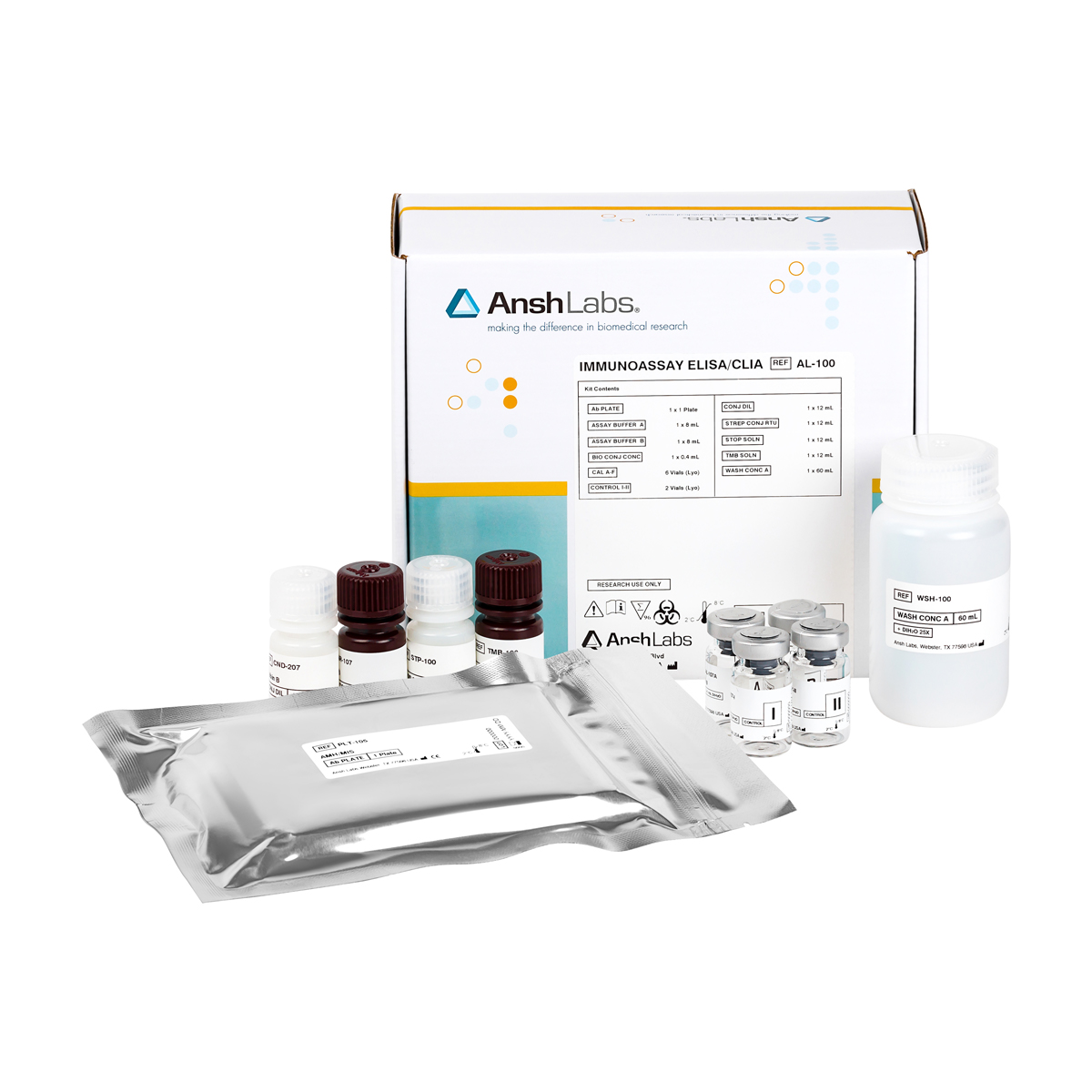The PECheck PAPP-A2 Enzyme-Linked Immunosorbent Assay (ELISA) kit provides materials for the quantitative measurement of PAPP-A2 in human maternal serum and other biological fluids.
| Catalog Number | |
|---|---|
| Regulatory Status | For Research Use Only. Not for use in diagnostic or therapeutic procedures. |
| Packaging | 96 well microtiter |
| Detection | HRP-based ELISA, colorimetric detection by dual wavelength absorbance at 450 nm and 630 nm as reference filter |
| Dynamic Range | 6, 4-480 ng/mL |
| Limit of Detection | 0.37 ng/mL |
| Sample Size | 20 µL |
| Sample Type | Serum |
| Assay Time | 1.5 hours |
| Species Reactivity | Human |
| Shelf Life | 24 months |
| Availability | Worldwide |
Pregnancy associated plasma protein-A2 (PAPP-A2) is a metalloproteinase protein identified as a homolog of PAPP-A in the metzincin superfamily of pappalysins1-8. PAPP-A2 is a noncovalently linked dimer of two 220-kDa subunits4. PAPP-A2 cleaves insulin-like growth factor-binding protein 5 (IGFBP5) and Insulin like growth factor binding protein 34. PAPP-A2 is function as a local regulator of insulin-like growth factor (IGF) bioavailability1-8. PAPP-A2 is expressed in a wide range of tissues and abundantly present in the placental syncytiotrophoblast and the pregnant uterus3. The insulin-like growth factors are important in human embryo implantation and placentation1-8. Numerous studies have identified the associations between the placental levels of PAPP-A2 and preeclampsia1-8. It is being suggested that either altered levels PAPP-A2 cause abnormal placental development, or the production of these proteins is altered to compensate for abnormal placentation1-8. Preeclampsia affects 5% – 7% of all pregnant women and poses threat to maternal and fetal well-being. PAPP-A2 is abundantly expressed in the placenta and have been reported to be significantly elevated in the maternal circulation as well as placentas of pregnancies complicated by preeclampsia. PAPP-A2 showed the highest value to predict preeclampsia-related pregnancy complications when added on top of traditional criteria and shows comparable value to that of the angiogenic markers sFlt-1 (soluble Fms-like tyrosinekinase-1), placental growth factor (PlGF), and sFlt-1/PlGF ratio9.
References:
1. Kløverpris S et al. A robust immunoassay for pregnancy-associated plasma protein-A2 based on analysis of circulating antigen: establishment of normal ranges in pregnancy. Mol Hum Reprod. 2013; 19:756
2. Crosley EJ et al. First-trimester levels of pregnancy-associated plasma protein A2 (PAPP-A2) in the maternal circulation are elevated in pregnancies that subsequently develop preeclampsia. Reprod Sci. 2014 Jun;21(6):754-60
3. Kramer et al. Differential expression of human placental PAPP-A2 over gestation and in preeclampsia Placenta 2016; 37: 19-25.
4. Overgaard MT et al. Pregnancy-associated plasma protein-A2 (PAPP-A2), a novel insulin-like growth factor-binding protein-5 proteinase. J Biol Chem 2001; 276:21849-21853.
5. Winn VD et al. Severe preeclampsia-related changes in gene expression at the maternal-fetal interface include sialic acid-binding immunoglobulin-like lectin-6 and pappalysin-2. Endocrinology. 2009; 150 :452-62
6. Overgaard MT et al. Messenger ribonucleic acid levels of pregnancy-associated plasma protein-A and the preform of eosinophil major basic protein: expression in human reproductive and nonreproductive tissue. Biol Reprod 1999; 61:1083-1089.
7. Wagner PK et al. Regulation of pregnancy-associated plasma protein A2 (PAPPA2) in a human placental trophoblast cell line (BeWo). Reprod Biol Endocrinol. 2011 15: 9-48
8. Hansen YB et al. First trimester PAPP-A2, PAPP-A and hCGβ in small-for-gestational-age pregnancies. Clin Chem Lab Med. 2016; 54:117-23
9. Neuman R et al. PAPP-A2 and Inhibin A as novel Predictors for Pregnancy Complications in Women with Suspected or Confirmed Preeclampsia. J Ame Heart Assoc 2020; Vol 9-19.
